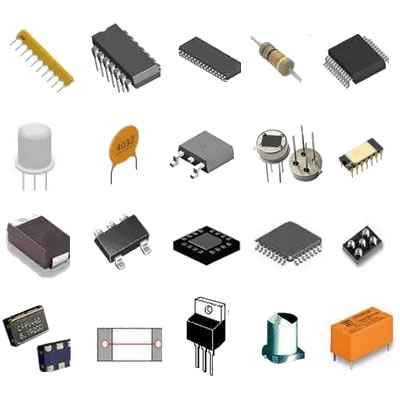An Article to Help You Understand What a Resistor Is and What It Does
I. Introduction
In the world of electronics, resistors play a crucial role in the functionality of circuits. But what exactly is a resistor? At its core, a resistor is a passive electrical component that limits or regulates the flow of electrical current in a circuit. Understanding resistors is essential for anyone interested in electronics, whether you're a hobbyist, a student, or a professional engineer. This article will provide a comprehensive overview of resistors, their types, how they work, their applications, and how to choose the right one for your needs.
II. The Basics of Electricity
Before diving into the specifics of resistors, it's important to grasp some fundamental concepts of electricity.
A. Explanation of Electrical Current
Electrical current is the flow of electric charge, typically carried by electrons in a conductor. It is measured in amperes (A). Current is influenced by two key factors: voltage and resistance.
1. **Definition of Current**: Current is the rate at which charge flows through a conductor. In simple terms, it can be thought of as the amount of electricity flowing through a wire at any given moment.
2. **Role of Voltage and Resistance**: Voltage, measured in volts (V), is the electrical potential difference that drives current through a circuit. Resistance, measured in ohms (Ω), is the opposition to the flow of current. The relationship between these three elements is defined by Ohm's Law.
B. Introduction to Ohm's Law
Ohm's Law is a fundamental principle in electronics that describes the relationship between voltage (V), current (I), and resistance (R). The formula is expressed as:
\[ V = I \times R \]
1. **Formula**: This equation states that the voltage across a resistor is equal to the current flowing through it multiplied by its resistance.
2. **Explanation of Each Component**:
- **Voltage (V)**: The potential difference that pushes the current through the circuit.
- **Current (I)**: The flow of electric charge.
- **Resistance (R)**: The property of a material that resists the flow of current.
III. What is a Resistor?
A. Definition and Function
A resistor is a component designed to provide a specific amount of resistance in an electrical circuit. Its primary function is to limit the flow of current, ensuring that other components in the circuit operate within their safe limits.
B. Types of Resistors
Resistors come in various types, each serving different purposes:
1. **Fixed Resistors**: These resistors have a constant resistance value and are commonly used in circuits where a specific resistance is required.
2. **Variable Resistors**: Also known as potentiometers or rheostats, these resistors allow the user to adjust the resistance value. They are often used in applications like volume controls in audio equipment.
3. **Specialty Resistors**: These include thermistors (temperature-sensitive resistors) and photoresistors (light-sensitive resistors), which change their resistance based on environmental conditions.
C. Physical Characteristics
Resistors can vary in size, shape, and materials:
1. **Materials Used**: Common materials include carbon, metal film, and wire-wound constructions. Each material has its own characteristics, affecting the resistor's performance.
2. **Size and Shape Variations**: Resistors can be found in various forms, from tiny surface-mount devices to larger through-hole components, depending on their application.
IV. How Resistors Work
A. Mechanism of Resistance
Resistors work by impeding the flow of electric current. When current passes through a resistor, it encounters resistance, which converts some of the electrical energy into heat.
1. **Interaction with Electric Current**: As current flows through a resistor, the electrons collide with the atoms in the resistor material, causing resistance.
2. **Heat Generation and Power Dissipation**: This interaction generates heat, which is a byproduct of resistance. The power dissipated by a resistor can be calculated using the formula:
\[ P = I^2 \times R \]
where P is power in watts.
B. Role in Controlling Current Flow
Resistors are essential for controlling current flow in circuits:
1. **Limiting Current to Protect Components**: By adding resistors to a circuit, you can prevent excessive current from damaging sensitive components.
2. **Voltage Division in Circuits**: Resistors can be used in series to create voltage dividers, allowing you to obtain a desired voltage from a higher voltage source.
V. Applications of Resistors
Resistors are ubiquitous in electronic devices and everyday applications.
A. In Electronic Devices
1. **Role in Amplifiers, Oscillators, and Filters**: Resistors are critical in shaping the behavior of amplifiers and oscillators, ensuring that signals are processed correctly.
2. **Use in Power Supplies and Voltage Regulation**: Resistors help regulate voltage levels in power supplies, ensuring that devices receive the appropriate voltage.
B. In Everyday Applications
1. **Household Appliances**: From toasters to televisions, resistors are found in nearly all household electronics, helping to control current and voltage.
2. **Automotive Electronics**: Resistors are used in various automotive applications, including lighting systems and engine control units.
C. In Educational Settings
1. **Use in Experiments and Learning About Circuits**: Resistors are fundamental components in educational kits, helping students understand basic circuit principles.
VI. Choosing the Right Resistor
When selecting a resistor for a specific application, several factors must be considered.
A. Understanding Resistor Ratings
1. **Resistance Value (Ohms)**: The resistance value determines how much current will flow through the resistor at a given voltage.
2. **Power Rating (Watts)**: This rating indicates how much power the resistor can safely dissipate without overheating.
3. **Tolerance Levels**: Tolerance indicates how much the actual resistance can vary from the stated value, which is crucial for precision applications.
B. Factors to Consider When Selecting a Resistor
1. **Application Requirements**: Consider the specific needs of your circuit, including the required resistance value and power rating.
2. **Environmental Conditions**: Factors such as temperature and humidity can affect resistor performance, so choose components that can withstand the conditions they will be exposed to.
VII. Common Misconceptions About Resistors
Despite their importance, there are several misconceptions about resistors.
A. Misunderstanding Resistance and Conductance
Many people confuse resistance with conductance. While resistance opposes current flow, conductance measures how easily current can flow through a material.
B. The Role of Resistors in Circuit Design
Some believe that resistors are merely passive components with no significant impact on circuit performance. In reality, they are vital for controlling current and voltage levels.
C. Myths About Resistor Overheating and Failure
While resistors can overheat if not properly rated for their application, they are generally reliable components when used correctly. Understanding their ratings and limits is key to preventing failure.
VIII. Conclusion
Resistors are fundamental components in the world of electronics, playing a vital role in controlling current and voltage in circuits. Understanding how resistors work, their types, and their applications can empower you to design and troubleshoot electronic devices effectively. Whether you're a beginner or an experienced engineer, exploring the world of resistors opens up new possibilities in electronics and circuit design.
As you continue your journey into electronics, remember that resistors are just one piece of the puzzle. There is a wealth of knowledge to discover, from capacitors to transistors, each contributing to the fascinating field of electrical engineering. Embrace the learning process, and you'll find that the world of electronics is both rewarding and exciting.
IX. References
For further reading and resources on resistors and electronics, consider exploring the following:
- "The Art of Electronics" by Paul Horowitz and Winfield Hill
- "Make: Electronics" by Charles Platt
- Educational websites like Khan Academy and SparkFun
- YouTube channels dedicated to electronics tutorials and projects
By delving deeper into these resources, you can enhance your understanding of resistors and their critical role in modern technology.





